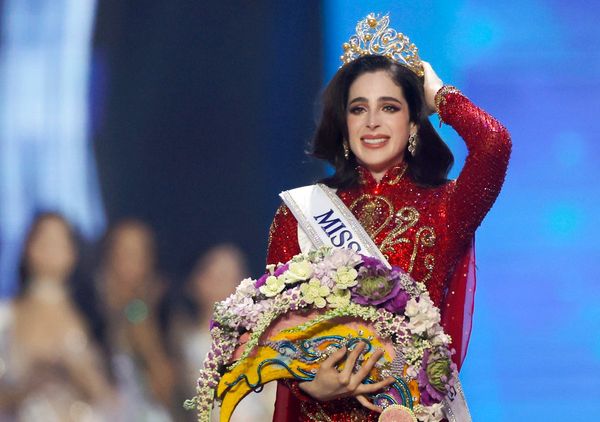
A turning point, a line in the sand, a pivotal moment. Whatever you want to call it, this Rugby World Cup, and the final in particular, is a point women’s rugby won’t be turning back from. The showpiece at a sold-out Twickenham was a moment decades in the making, a long-held dream for so many in the sport.
This summer has been unbelievable. The sight of thousands of fans in the stands, and not only for the England games, was just what the game needed. People travelled from abroad to support their nations but local communities also turned out for all 16 teams, which led Ruahei Demant, the New Zealand co-captain, to call England “world-leading” in supporting women’s sport. Every match also felt like a celebration of the game, whether that was down to players being applauded off their coaches, a fan at Twickenham saying “we’re all community here” or young supporters getting photos with their idols such as Australia’s Desiree Miller.
For the tournament to gain such momentum and England players such as Ellie Kildunne and Meg Jones to become household names was the kind of breakthrough many who have covered the game had hoped for, but feared might never arrive. Now that it has, there’s no going back. This was women’s rugby’s moment.
Covering the competition has been special: not just to witness history, but the access and time spent with the athletes and coaches across the tournament. From Tony Christie, the Black Ferns coach, who would introduce himself and shake hands with each person in the room before every press conference, to John Mitchell using nearly everyone’s first names, and the players being so generous with their time and words. The overriding feeling was one of mutual respect.
Each player has their own story and so many were open to sharing them. Jones was so moving when speaking about the grief she has for her parents and how much she wanted to win. Another Red Rose in Alex Matthews shone a light on “doing it for the quiet ones” during the week she was captain for England’s match against Australia. There were genuinely touching moments, such as when Jones comforted an emotional Mitchell the day after the final as he said he couldn’t wait to see his wife after the game.
Outside the England camp, New Zealand’s Katelyn Vaha’akolo was funny yet inspiring when speaking about wanting to show there is space for people with big personalities in the sport. Canada’s Julia Schell was deeply relatable in her excitement that Shania Twain had shown support for the team on social media; she shared that she had fallen over while running to tell her captain, Alex Tessier, the news. In the stands at Sandy Park, Ruby Tui, left out of the New Zealand playing squad but working as a BBC pundit, stood and performed the haka as the Black Ferns laid down their gauntlet to Japan. And who could forget Samoa’s coach, Ramsey Tomokino, getting emotional when speaking about the support his team deserves?
The journey to this point has been long and arduous. Two decades ago, sitting beside my mum on the sofa watching the men’s rugby, I didn’t even know the women’s game existed there was so little coverage. My secondary school didn’t even offer contact rugby for girls.
When I started covering women’s rugby in 2019, the Red Roses were still playing their Six Nations games after the men had played. That meant a lot of fans left. Matthews spoke earlier in the tournament about warming up in front of a large crowd and then running out for a game to see only a few thousand remaining in their seats. For the sport to accelerate at such a pace that England are financially viable, making the Rugby Football Union a profit on game day and selling out iconic stadiums, is just breathtaking.
It was only in April 2023 that the Red Roses had their first standalone Test match at Twickenham with almost 60,000 in the stands. Two years later, 81,885 roared them on to World Cup glory.
England’s players and coaches have said arriving at the stadium blew them away. Mitchell cited the south stand “spinning with people” and there is a magnificent picture of the entire stand full of fans trying to get a glimpse of the players arriving.
Inside the stadium, 50,000 had turned up for the kick-off of the bronze final between New Zealand and France and 60,000 were in their seats for the second half. Portia Woodman-Wickliffe was shown walking through thousands of fans on her way into the stadium saying “wow” after the New Zealand team had expected no one to show up for their match.
The most exciting thing was the sense that this is just the start for this sport. There were a lot of references to glass ceilings being shattered but there are no ceilings for these athletes. Women’s sport is finally getting the respect and audiences it deserves. The challenge for the powers that be is to try to elevate domestic success to an international level around the world. Will England’s Premiership Women’s Rugby, France’s Elite 1 or New Zealand’s Aupiki get new fans in seats to progress the sport further? That remains to be seen. Women’s rugby has taken a giant leap forward over the last six weeks but, for sustainability, there may need to be more baby steps over the next World Cup cycle.







